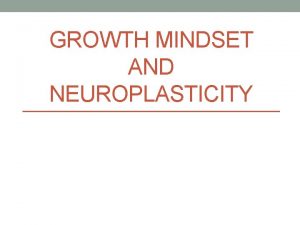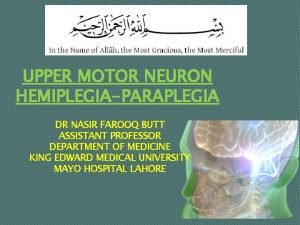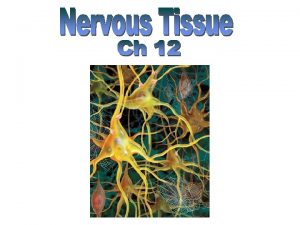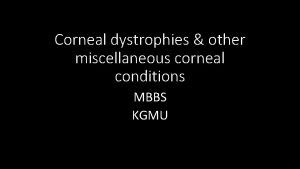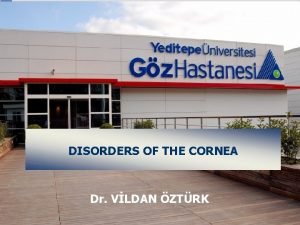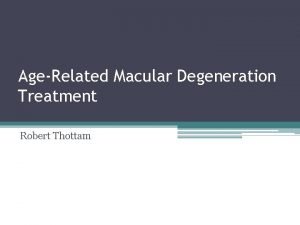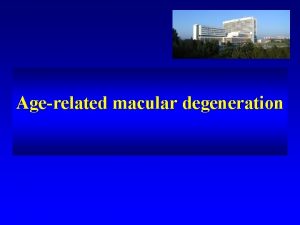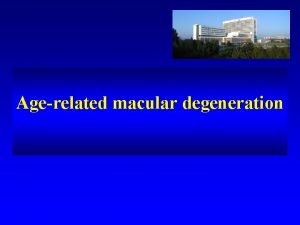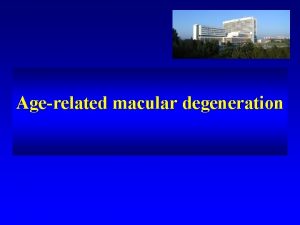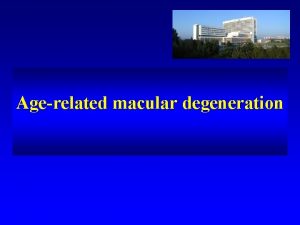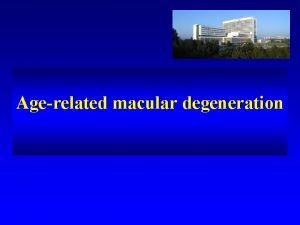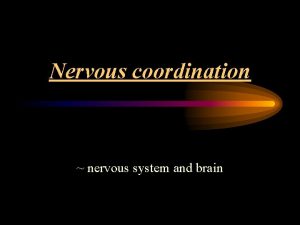Neuroplasticity and Responses to Nervous System Damage Degeneration





















- Slides: 21

Neuroplasticity and Responses to Nervous System Damage • • Degeneration - deterioration Regeneration – regrowth of damaged neurons Reorganization Recovery Copyright © 2006 by Allyn and Bacon

What happens when an axon is severed (cut)? • Both portions of the axon degenerate

proximal portion of axon distal portion of axon

Degeneration • Anterograde - degeneration of the axonal segment – between the cut and synaptic terminal – cut off from cell’s metabolic center- axon swells and breaks off within a few days Copyright © 2006 by Allyn and Bacon

Anterograde degeneration

• Retrograde degeneration– degeneration of the segment between the cut and cell body – takes place more slowly – if regenerating axon makes a new synaptic contact, the neuron may survive

Anterograde degeneration Retrograde degeneration

Neural Regeneration • Regeneration is virtually nonexistent in the CNS of adult mammals and unlikely, but possible, in the PNS Copyright © 2006 by Allyn and Bacon

What happens in the PNS? • Only occurs at the proximal end of axon • Axonal sprouting

Axonal sprouting

• at the same time…. . – if myelin sheaths line up – they secrete “growth promoting” factors – AND if one of the sprouts matches up – it will begin to grow and reestablish connections


Why doesn’t this happen in the CNS? • differences in the glial cells that make myelin • In PNS – Schwann cells make myelin sheaths • In CNS – oligodendroglia make myelin sheaths • HOW THESE GLIAL CELLS DO THIS IS VERY DIFFERENT!!!

What are some of these differences? • Schwann cell – each Schwann cell is a single segment of myelin

Each of these is a Schwann Cells

What are some of these differences? • Schwann cell – each Schwann cell is a single segment of myelin • Oligodendroglia – make multiple sheaths of myelin


Why do mammalian PNS neurons regenerate? • So the different ways they contribute myelin may make a difference • Also - Schwann cells promote regeneration by releasing neurotrophic factors (stimulate growth) Oligodendroglia - release “growth inhibiting” factors AND making it impossible for the axon to grow Copyright © 2006 by Allyn and Bacon

Reorganization • Can occur in the CNS

Role of embryonic stem cells • what are stem cells? – derived from embryos – most are derived from embryos that develop from eggs that have been fertilized in vitro (IVF) — in an in vitro fertilization clinic—and then donated for research purposes with informed consent of the donors. – They are not derived from eggs fertilized in a woman's body. – pluripotent- can develop into many cell types!

Adult stem cell neurogenesis • Two regions in the brain that we know this occurs – Part of the hippocampus – Subventricular zone – area of lining of ventricles in brain • Controversy regarding the role of these
 Identify each type of neuronal pool
Identify each type of neuronal pool Nervous
Nervous Nerve cell process
Nerve cell process What's my mindset
What's my mindset Neural networks ib psychology
Neural networks ib psychology Habituation neuroplasticity
Habituation neuroplasticity Nasir farooq
Nasir farooq Dc motor input
Dc motor input Spinal shock vs neurogenic shock
Spinal shock vs neurogenic shock 7/13
7/13 Terrien marginal degeneration
Terrien marginal degeneration Senile furrow degeneration cornea
Senile furrow degeneration cornea Magdalena karadža
Magdalena karadža Foster fuch spots
Foster fuch spots Karyolysis
Karyolysis Tobacco dust appearance
Tobacco dust appearance Ruffini corpuscles
Ruffini corpuscles Histopathology of enamel caries
Histopathology of enamel caries Nervous system and digestive system
Nervous system and digestive system Endocrine system
Endocrine system Endocrine system and nervous system
Endocrine system and nervous system Mechanism of hormone action
Mechanism of hormone action



